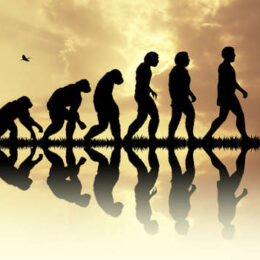Posted by Michael Haran on Jan 7, 2024
I was listening to MSNBC when Timothy Snyder, a history professor at Yale, was talking about how German society was stolen by the Nazis. The German narrative in the 1930’s should have been about how the county was economically coming back from WWI when it was highjacked by Hitler and his crony Nazis using the fear of returning to the depression of the 1920s. The same thing is currently happening in America. The country should be celebrating the rebound from the pandemic and the positive economy we are all now experiencing. Like Hitler, Trump is a mesmerizer. Because his MAGA base is so enthralled with him lies cannot be seen for what they are, plus, as Dilbert Cartoonist Scott Adams once said “Never underestimate the stupidity of the general public,” the MAGA base is so uninformed that they wouldn’t know a Trump lie from a Lincoln truth.
Since anyone born in the U.S. has never lived under any other political system than representative Democracy, it’s hard to understand how some people can be so caviler about losing it. They don’t understand that their individual voice would be lost and they would be subjected to a form of social slavery where their opinion would never again matter.
Now, I still believe that the mass majority of American voters see Trump for what he is and want nothing to do with him. It’s the same vibe that beat him in 2020. But what’s unnerving is the fact that here are so many people that believe the economy is terrible simply because Trump says it is. These people think that the growing economy, high employment, low unemployment, and falling inflation is all a lie created by left-wing elitists.
Living where we do it’s frustrating that our voices can’t reach more people in middle America. But as Snyder said we have to work on the small stuff. Talk the truth to small groups and individuals; write meaningful letters to the editor of your local newspapers, knock on doors and put time into Democratic Club phone banks. Even though I don’t think Trump has a snowballs chance in hell of winning, just the thought of what could happen to America and the only political system most of us have ever known scares the bajebbers out of me and it should you too.
Read More
Posted by Michael Haran on Sep 25, 2021
It’s The Environment
Edition #1 – Climate Primer
With the planet under severe stress in no small part to human activity, our environmental podcast topics will focus how humans can both repair and prevent further damage before natures decided it’s had enough and eliminated the earth major polluter and killer of plants and animals – namely us. Many of earth’s historic extensions have been unavoidable as the planet has stabilized to what it is today. If humans don’t change our ways, we may be the first of earth’s creature cause our own extinction.
With a new climate report just released by the United Nation’s Intergovernmental Panel on Climate Change (IPCC), I thought it would be a good time to update our Climate Primer. This edition we will take a look at how the Earth’s climate works, what’s causing global warming and how dangerous is it for life on the planet.
The 4,000 page report, which drew more than 700,000 viewers to a virtual, predawn press conference, is the first installment of the latest climate change assessment by the IPCC. It focuses on the physical science of climate change, and reports on the current state of the climate, possible climate futures, risk assessment and limiting future climate change.
Two other reports due out next year will assess impacts to society and ecosystems and strategies to adapt to and mitigate further changes.
Written by more than 200 of the world’s leading climate scientists, the report synthesizes the best available climate science information from more than 14,000 studies, this report is the most dire yet.
The report shows that if emissions of greenhouse gases continue at the same levels or are only slightly reduced, the outcome will be continued warming and worsening effects for at least the rest of the century. But if governments make immediate, drastic cuts in emissions, they can stabilize the climate at about 1.5 degrees Celsius of warming compared to preindustrial levels.
The West’s Megadrought
The West is currently in a megadrought as California and the southwest face soring temperatures. In a study published last year in the journal Science, researchers determined that climate change made drought conditions 46 percent worse between 2000 and 2018. We’re “living in a new climate,” said Stanford University climatologist Noah Diffenbaugh, “in which these water deficits primarily result from the influence of warming temperature.”
With 92% of the West under “severe” or “exceptional” drought according to the U.S. Drought Monitor and recent record-breaking temperatures of 107 degrees in Utah, 116 in Las Vegas, and 118 in Phoenix, I wanted to take a look back several years when the climate debate was raging in no small part to Donald Trump.
It’s about the weather
As the old saying goes, “If you want to know what the weather is look out your window.” When we talk about weather, we mean local and short-term. On one hand, when it rains or snows where you live, that’s weather. Climate, on the other hand, is long-term and regional. The climate of an area is the average weather conditions in a region over a long period of time. When we talk about climate being long-term, we mean really long-term. Even a few hundred years is pretty short-term when it comes to climate.
In fact, changes in climate sometimes take tens of thousands of years. That means if you happen to have a winter that isn’t as cold as usual, with not very much snow — or even two or three such winters in a row — that isn’t a change in climate. That’s just an anomaly — an event that falls outside of the usual statistical range but doesn’t represent any permanent, long-term change.
However, even small changes in climate can have major effects. When scientists talk about “the Ice Age,” you probably envision the world frozen, covered with snow and suffering from frigid temperatures. In fact, during the last ice age (ice ages recur roughly every 50,000 to 100,000 years), the earth’s average temperature was only 5 Celsius degrees cooler than modern temperature averages [Source: NASA].
Climate Deniers
On the deniers’ side climate is always changing. The earth warms and cools about every ten thousand years. We have had ice ages and warmer periods when alligators were found in the Norwegian island of Spitzbergen (Spitz-ber-gan). Ice ages have occurred in a hundred-thousand-year cycle for the last 700 thousand years, and there have been previous periods that appear to have been warmer than the present despite CO2 levels being lower than they are now. More recently, we have had the medieval warm period and the little ice age.
Eventually we will once again have glaciers in the middle of North America. In pre-historic times we had forest fires that burned from the Pacific coast to the Rocky Mountains and at one time the earth was covered in volcanos spewing tons of magma gases into the atmosphere. Humans have only been spewing for about a hundred years and affecting the climate for even less than that.
Research published in the journal “Science” on September 8, 2013 stated “Abrupt climate change has been a systemic feature of Earth’s climate for hundreds of thousands of years and may play an active role in longer term climate variability through its influence on ice age terminations.”
Climate Believers
On the believers’ side, according to the Intergovernmental Panel on Climate Change (IPCC), a group of over 2,500 scientists from countries across the world, warming of the climate system is unequivocal, and since the 1950s, many of the climate changes are unprecedented over decades to millennia. The atmosphere and ocean have warmed, the amounts of snow and ice have diminished, sea level has risen, and the concentrations of greenhouse gases have increased. In the Northern Hemisphere, 1983–2012 was likely the warmest 30-year period of the last 1400 years.
During those “hundreds of thousands of years” climate anthropologists have been able to identify six major species die-offs most likely caused by CO2. This is probably what killed off the dinosaurs some 60 million years ago and let’s hope that we’re not the next species to go considering the amount of CO2 humans are currently releasing into the atmosphere.
In its 2001 Third Assessment Report, the Intergovernmental Panel on Climate Change (IPCC) foresaw that global warming would lead to increasingly deadly heatwaves. “More hot days and heatwaves are very likely over nearly all land areas,” the world’s top climate scientists warned. “These increases are projected to be largest mainly in areas where temperature induced soil moisture decreases occur.”
Twenty years later, it seems as though these climate scientists were gazing into a crystal ball rather than computer monitors. At the end of June 2021, the normally temperate Pacific Northwest experienced a record-shattering heatwave. The village of Lytton, in British Columbia, set a new all-time Canadian temperature record of 121.3 degrees (49.6 Celsius) just before it burned to the ground. Quillayute in the northwest corner of Washington, shattered its previous high temperature record by a full 11 degrees.
Climate Change
Climate change is happening very quickly compared to changes that occurred in the past: “As the Earth moved out of ice ages over the past million years, the global temperature rose a total of 4 to 7 degrees Celsius over about 5,000 years. In the past century alone, the temperature has climbed 0.7 degrees Celsius, roughly ten times faster than the average rate of ice-age-recovery warming.”
“According to an ongoing temperature analysis conducted by scientists at NASA the average global temperature on Earth has increased by about 1.4°Fahrenheit since 1880. Two-thirds of the warming has occurred since 1975.”
Before the industrial revolution, the CO2 content in the air remained quite steady for thousands of years. Natural CO2 is not static, however as it is generated by natural processes, and absorbed by others. Natural land and ocean carbon remains roughly in balance and have done so for a long time – and we know this because we can measure historic levels of CO2 in the atmosphere directly from artic ice cores.
Although human output of 29 gigatons of CO2 is tiny compared to the 750 gigatons moving through the carbon cycle each year, it adds up when more CO2 is released from outside of the natural carbon cycle by burning fossil fuels because the land and ocean cannot absorb the extra CO2. Although about 40% of this additional CO2 is absorbed, the rest remains in the atmosphere, and as a consequence, atmospheric CO2 is at its highest level in 15 to 20 million years. A natural change of 100ppm normally takes 5,000 to 20,000 years. The recent increase of 100ppm has taken just 120 years).
Human CO2 emissions upset the natural balance of the carbon cycle. Man-made CO2 in the atmosphere has increased by a third since the pre-industrial era, creating an artificial forcing of global temperatures which is warming the planet. As stated, while fossil-fuel derived CO2 is a very small component of the global carbon cycle, the extra CO2 is cumulative because the natural carbon exchange cannot absorb all the additional CO2. This accumulation of atmospheric CO2 is building up, the additional CO2 is being produced by burning fossil fuels, and that build up is accelerating.
Life flourished in the Eocene, the Cretaceous and other times of high CO2 in the atmosphere because the greenhouse gasses were in balance with the carbon in the oceans and the weathering of rocks. Life, ocean chemistry, and atmospheric gasses had millions of years to adjust to those levels.
But there have been several times in Earth’s past when Earth’s temperature jumped abruptly, in much the same way as they are doing today. Those times were caused by large and rapid greenhouse gas emissions, just like humans are now causing.
Those abrupt global warming events were almost always highly destructive for life, causing mass extinctions such as at the end of the Permian, Triassic, or even mid-Cambrian periods. The symptoms from those events (a big, rapid jump in global temperatures, rising sea levels, and ocean acidification) are all happening today with human-caused climate change.
So yes, the climate has changed before humans, and in most cases scientists know why. In all cases we see the same association between CO2 levels and global temperatures. And past examples of rapid carbon emissions (just like today) were generally highly destructive to life on Earth.
Global warming
The Earth’s greenhouse gasses, principally CO2, but also methane, have controlled most ancient climate changes. When they were reduced, the global climate became colder. When they were increased, the global climate became warmer. When CO2 levels jumped rapidly, the global warming that resulted was highly disruptive and sometimes caused mass extinctions.
The Earth’s global warming is cyclical. When it happens naturally, it can take the Earth thousands of years to warm up or cool down just 1 degree. In addition to recurring ice-age cycles, the Earth’s climate can change due to volcanic activity, differences in plant life, changes in the amount of radiation from the sun, and natural changes in the chemistry of the atmosphere but time around humans are the cause, mainly by our CO2 emissions as we are emitting prodigious quantities of CO2, at a rate faster than even the most destructive climate changing events in earth’s past.
In specific terms, an increase of 1.0 or more Celsius degrees in a period of 100 to 200 hundred years would be considered global warming. Over the course of 100 years, an increase of even 0.4 degrees Celsius would be significant. At their 2007 Paris conference to compare and advance climate research, the IPCC scientists determined that the Earth has warmed .6 degrees Celsius between 1901 and 2000. When the timeframe is advanced by five years, from 1906 to 2006, the scientists found that the temperature increase was .74 degrees Celsius.
The report concluded that essentially all of the rise in global average temperatures since the 19th century has been driven by humans burning fossil fuels, clearing forests and loading the atmosphere with greenhouse gases like carbon dioxide and methane that trap heat. The IPCC used computer models to simulate climate change and discovered that only models that included human contributions to global warming portrayed an accurate representation of today’s climate. When the models did not include human activity, the climates they simulated did not resemble our own.
Other observations from the IPCC include:
- Of the last 12 years, 11 have ranked among the warmest years since 1850.
- The warming trend of the last 50 years is nearly double that of the last 100 years, meaning that the rate of warming is increasing.
- The ocean’s temperature has increased at least to depths of 3,000 meters (over 9,800 feet); the ocean absorbs more than 80 percent of all heat added to the climate system.
- Glaciers and snow cover have decreased in regions both in the Northern and Southern hemispheres, which has contributed to the rise of sea levels.
- Average Arctic temperatures have increased by nearly twice the global average rate over the last 100 years (the IPCC also noted that Arctic temperatures are highly variable from decade to decade).
- The area covered by frozen ground in the Arctic has decreased by approximately 7 percent since 1900, with seasonal decreases of up to 15 percent.
- Precipitation has increased in the eastern regions of the Americas, northern Europe and parts of Asia; other regions such as the Mediterranean and southern Africa have experienced drying trends.
- Westerly winds have been growing stronger.
- Droughts are more intense, have lasted longer and covered larger areas than in the past.
- There have been significant changes in extreme temperatures — hot days and heat waves have become more frequent while cold days and nights have become less frequent.
- While scientists have not observed an increase in the number of tropical storms, they have observed an increase in the intensity of such storms in the Atlantic correlated with a rise in ocean surface temperatures.
The Greenhouse Effect
Global warming is caused by an increase in the greenhouse effect. The greenhouse effect is not a bad thing by itself — it’s what allows Earth to stay warm enough for life to survive.
The greenhouse effect takes place when the sun’s rays hit the Earth’s atmosphere and the surface of the Earth, approximately 70 percent of the energy stays on the planet, absorbed by land, oceans, plants and other things. The other 30 percent is reflected into space by clouds, snow fields and other reflective surfaces [Source: NASA]. The earth would burn up if that 30% that gets through didn’t get radiated back out.
The Earth’s oceans and land masses eventually radiate that heat back out. Some of this heat makes it into space. The rest of it ends up getting absorbed when it hits certain things in the atmosphere, such as carbon dioxide, methane gas and water vapor. Greenhouse gases consist of approximately 95% water vapor, 3% is CO2 and 2% methane. After these components in our atmosphere absorb all this heat, they emit energy (also in the form of heat). The heat that doesn’t make it out through Earth’s atmosphere keeps the planet warmer than it is in outer space, because more energy is coming in through the atmosphere than is going out. This is all part of the greenhouse effect that keeps the Earth warm. The question is what percentage of that 3% is man-made and is that man-made portion really effecting climate change or is there a natural cycle at play here?
Earth Without the Greenhouse Effect
Without the greenhouse effect Earth would probably look a lot like Mars. Mars doesn’t have a thick enough atmosphere to reflect enough heat back to the planet, so it gets very cold there. Some scientists have suggested that we could terraform the surface of Mars by sending “factories” that would spew water vapor and carbon dioxide into the air. If enough material could be generated, the atmosphere might start to thicken enough to retain more heat and allow plants to live on the surface. Once plants spread across Mars, they would start producing oxygen. After a few hundred or thousand years, Mars might actually have an environment that humans could simply walk around in — all thanks to the greenhouse effect.
Global Warming: What’s Happening?
The greenhouse effect happens because of certain naturally occurring substances in the atmosphere. Since the Industrial Revolution, humans have been pouring huge amounts of those substances into the air.
Carbon dioxide (CO2) is a colorless gas that is a by-product of the combustion of organic matter. It makes up less than 0.04 percent of Earth’s atmosphere, most of which was put there by volcanic activity very early in the planet’s life. Today, according climate scientists, human activities are pumping huge amounts of CO2 into the atmosphere, resulting in an overall increase in carbon dioxide concentrations [Source: Keeling, C.D. and T.P. Whorf].
These increased concentrations are considered the primary factor in global warming, because carbon dioxide absorbs infrared radiation. Most of the energy that escapes Earth’s atmosphere comes in this form, so extra CO2 means more energy absorption and an overall increase in the planet’s temperature.
Although human output of 29 gigatons of CO2 is tiny compared to the 750 gigatons moving through the carbon cycle each year, it adds up when more CO2 is released from outside of the natural carbon cycle by burning fossil fuels because the land and ocean cannot absorb the extra CO2. Although about 40% of this additional CO2 is absorbed, the rest remains in the atmosphere, and as a consequence, atmospheric CO2 is at its highest level in 15 to 20 million years. A natural change of 100ppm normally takes 5,000 to 20,000 years. The recent increase of 100ppm has taken just 120 years).
The IPCC says that the pre-industrial amount of CO2 in the Earth’s atmosphere was about 280 parts per million (ppm), meaning that for every million molecules of dry air, 280 of them were CO2. In contrast, today’s levels of CO2 were measured at 413 parts per million. The last time global carbon dioxide levels were consistently at or above 400 ppm was at least 2 million years ago when humans didn’t exist. The Institute also notes that the average surface temperature of Earth has gone from 14.5 degrees C in 1860 to 15.3 degrees C in 1980 (a 2 degrees Fahrenheit increase) and the past decade was likely the hottest the planet has been in 125,000 years.
Scientists concluded that because nations have waited so long to curb emissions, average global temperatures will rise 1.5 degrees Celsius within the next 20 years due to the emissions already swirling in the atmosphere, bringing even more wildfires, droughts, heat waves, hurricanes, floods, sea level rise and famine resulting from reduced agricultural yields and collapsing ecosystems and fisheries. Many of these disasters have been on full display this summer here in California and around the world.
Nitrous oxide (N2O) is another important greenhouse gas. Although the amounts being released by human activities are not as great as the amounts of CO2, nitrous oxide absorbs much more energy than CO2 (about 270 times as much). For this reason, efforts to curb greenhouse gas emissions have focused on N2O as well [Source: Soil Conservation Council of Canada]. The use of large amounts of nitrogen fertilizer on crops releases nitrous oxide in great quantities, and it is also a by-product of combustion.
Methane is a combustible gas, and it is the main component of natural gas. Methane occurs naturally through the decomposition of organic material and is often encountered in the form of “swamp gas.” Man-made processes produce methane in several ways:
- By extracting it from coal
- From large herds of livestock (i.e., digestive gases)
- From the bacteria in rice paddies
- Decomposition of garbage in landfills
Methane acts much like carbon dioxide in the atmosphere, absorbing infrared energy and keeping heat energy on Earth. The IPCC says that methane’s concentration in the atmosphere in 2005 was 1,774 parts per billion (ppb). While there isn’t as much methane as carbon dioxide in the atmosphere, methane can absorb and emit twenty times more heat than CO2 [Source: Hopwood, Nick and Cohen, Jordan]. According to Discover Magazine some scientists even speculate that a large-scale venting of methane into the atmosphere (such as from the release of huge chunks of methane ice locked under the oceans) could have created brief periods of intense global warming that led to some of the mass extinctions in the planet’s distant past.
Carbon dioxide and methane concentrations in 2005 exceeded their natural ranges of the last 650,000 years. Much of this increase in concentration is due to burning fossil fuels
What will actually happen if the entire planet warms up a few degrees?
We have seen that an average drop of just 5 degrees Celsius over thousands of years can cause an ice age; so what will happen if the Earth’s average temperature increases a few degrees in just a few hundred years? There is no clear answer. Even short-term weather predictions are never perfectly accurate because weather is a complex phenomenon. (As Bill Murry once said, “Fool me once shame on you, fool me twice shame on me, fool me 350,000 times shame on the weather man). When it comes to long-term climate predictions, all we can manage are educated guesses based on our knowledge of climate patterns through history.
Glaciers and ice shelves around the world are melting [Source: Guardian Unlimited]. The loss of large areas of ice on the surface could accelerate global warming because less of the sun’s energy would be reflected away from Earth to begin with as in the greenhouse effect. An immediate result of melting glaciers would be a rise in sea levels. Initially, the rise in sea level would only be an inch or two. Even a modest rise in sea levels could cause flooding problems for low-lying coastal areas. However, if the West Antarctic Ice Sheet were to melt and collapse into the sea, it would push sea levels up 10 meters (more than 32 feet), and many coastal areas would completely disappear beneath the ocean [Source: NASA].
The IPCC estimates that sea levels rose 17 centimeters (or about 6.7 inches) in the 20th century. Scientists project rising sea levels to continue through the 21st century, with levels increasing between 7 and 22 inches by 2100. The IPCC did not consider changes in ice flow in these projections due to a lack of scientific data. Sea levels will likely be greater than the range of projections, but we can’t be sure by how much until more data can be gathered about the effect of global warming on ice flows.
With a rise in the overall temperature of the ocean, ocean-borne storms such as tropical storms and hurricanes, which get their fierce and destructive energy from the warm waters they pass over, could increase in force.
If the rising temperature affects glaciers and ice shelves, the polar ice caps could be in danger of melting and causing the oceans to rise.
Water Vapor, The Other Greenhouse Gas
Water vapor is the most abundant greenhouse gas, but it is more often than not a result of climate changes rather than man-made emissions. Water or moisture on the Earth’s surface absorbs heat from the sun and the surroundings. When enough heat has been absorbed, some of the liquid’s molecules may have enough energy to escape from the liquid and begin to rise into the atmosphere as a vapor. As the vapor rises higher and higher, the temperature of the surrounding air becomes lower and lower. Eventually, the vapor loses enough heat to the surrounding air to allow it to turn back into a liquid. Earth’s gravitational pull then causes the liquid to “fall” back down, completing the cycle. This cycle is also called a “positive feedback loop.”
Water vapor is more difficult to measure than the other greenhouse gases and scientists are uncertain as to the exact part that it plays in global warming. Scientists believe there is a correlation between the increase of carbon dioxide in our atmosphere and the increase of water vapor. The NOAA Web site has this to say:
As water vapor increases in the atmosphere, more of it will eventually also condense into clouds, which are more able to reflect incoming solar radiation (thus allowing less energy to reach the Earth’s surface and heat it up).
If the Polar Ice Caps Melt
The polar ice caps could be in danger of melting and causing the oceans to rise, but no one knows when it might happen.
The Earth’s main ice-covered landmass is Antarctica at the South Pole, with about 90 percent of the world’s ice (and 70 percent of its fresh water). Antarctica is covered with ice an average of 2,133 meters (7,000 feet) thick. If all of the Antarctic ice melted, sea levels around the world would rise about 61 meters (200 feet). But the average temperature in Antarctica is -37°C, so the ice there is in no danger of melting.
In fact, in most parts of the continent it never gets above freezing.
At the other end of the world, the North Pole, the ice is not nearly as thick as at the South Pole. The ice floats on the Arctic Ocean. If it melted, sea levels would not rise.
There is a significant amount of ice covering Greenland, which would add another 7 meters (20 feet) to the oceans if it melted. Because Greenland is closer to the equator than Antarctica, the temperatures there are higher, so the ice is more likely to melt. Scientists from the Universities of London and Edinburgh say that ice loss in Antarctica and Greenland together contribute approximately 12 percent of the rise in sea levels [Source: Science Daily].
But there might be a different reason than polar ice melting for the higher ocean level – the weight of the water. The higher temperature of the water the water occupies a bigger space. Water is most dense at 4 degrees Celsius and above and below this temperature, the density of water decreases. So as the overall temperature of the water increases it naturally expands a little bit making the oceans rise.
Effects of Global Warming: Seasons and Ecosystems
Interesting enough less abrupt changes would occur around the world as average temperatures increased. In temperate areas with four seasons, the growing season would be longer with more precipitation. This could be beneficial in many ways for these areas. However, less temperate parts of the world would likely see an increase in temperature and a sharp decrease in precipitation, causing long droughts and potentially creating deserts like what is now happening in the American West.
Because the Earth’s climate is so complex, no one is really sure how much a change to one region’s climate will affect other regions. For example, scientists at the University of Colorado theorize that the decrease in sea ice in the Arctic could reduce snowfall in Colorado because Arctic cold fronts would be less intense. This could impact everything from farmlands to the ski industry.
The most devastating effects, and also the hardest to predict, are the effects on the world’s living ecosystems. Many ecosystems are very delicate, and the slightest change can kill off several species as well as any other species that depend on them. Most ecosystems are interconnected, so the chain reaction of effects could be immeasurable. The results could be something like a forest gradually dying off and turning to grassland or entire coral reefs dying. Many species of plants and animals would adapt or move to deal with the shift in climate, but many would become extinct.
Some ecosystems are already changing drastically due to a shift in climate. The University of Alberta reports that much of what once was tundra in northern Canada is turning into forests. They also noticed that the change from tundra to forest isn’t linear; instead, it seems that the change happens in sudden spurts.
The human cost of global warming is hard to quantify. Thousands of lives per year could be lost as the elderly or ill suffer from heat stroke and other heat-related trauma. Poor and underdeveloped nations would suffer the worst effects, since they would not have the financial resources to deal with the problems that come with an increase in temperature. Huge numbers of people could die from starvation if a decrease in precipitation limits crop growth and from disease if coastal flooding leads to widespread water-borne illness.
The Carnegie Institution estimates that around $5 billion in crop losses per year are due to global warming. Farmers see a decrease of about 40 million metric tons of cereal grains like wheat, barley and corn each year. Science Daily found that scientists discovered that an increase of only 1 degree Fahrenheit in average temperature results in a 3 to 5 percent drop in crop yields.
Is Global Warming a Real Problem?
Despite a scientific consensus on the subject, some people don’t think global warming is happening at all. There are several reasons for this:
- They don’t think the data show a measurable upward trend in global temperatures, either because we don’t have enough long-term historical climate data or because the data we do have isn’t clear enough.
- A few scientists think that data is being interpreted incorrectly by people who are already worried about global warming. That is, these people are looking for evidence of global warming in the statistics, instead of looking at the evidence objectively and trying to figure out what it means.
- Some argue any increase in global temperatures we are seeing could be a natural climate shift, or it could be due to other factors than greenhouse gases.
Most scientists recognize that global warming does seem to be happening, but a few don’t believe that it is anything to be worried about. These scientists say that the Earth is more resistant to climate changes on this scale than we think. Plants and animals will adapt to subtle shifts in weather patterns, and it is unlikely anything catastrophic will happen as a result of global warming. Slightly longer growing seasons, changes in precipitation levels and stronger weather, in their opinion, are not generally disastrous. They also argue that the economic damage caused by cutting down on the emission of greenhouse gases will be far more damaging to humans than any of the effects of global warming.
In a way, the scientific consensus may be a moot point. The real power to enact significant change rests in the hands of those who make national and global policy. Some policymakers in the United States are reluctant to propose and enact changes because they feel the costs may outweigh any risks global warming poses. Some common concerns, claims and complaints include:
- A change in the United States’ policies in emissions and carbon production could result in a loss of jobs.
- India and China, both of which continue to rely heavily on coal for their main source of energy, will continue to cause environmental problems even if the United States changes its energy policies (critics of these policymakers point out that this approach employs the tu quoque (quo-qua – you too)logical fallacy).
- Since scientific evidence is about probabilities rather than certainties, we can’t be certain that human behavior is contributing to global warming, that our contribution is significant, or that we can do anything to fix it.
- Technology will find a way to get us out of the global warming mess, so any change in our policies will ultimately be unnecessary and cause more harm than good.
What’s the correct answer? It can be hard to figure out. Most scientists will tell you that global warming is real and that it is likely to do some kind of harm, but the extent of the problem and the danger posed by its effects are wide open for debate.
Preventing Global Warming
An Economist’s Take
In Science Daily, Dr. Peter Tsigaris, an economist at Thompson Rivers University, says that taking steps to curb global warming makes sense from both an environmental and an economic standpoint. He estimates that addressing global warming by changing our dependency on fossil fuels and other behavior would cost an estimated one percent of global Gross Domestic Product (GDP) per year, while taking no action could cost 5 percent of global GDP each year. Extreme climate change could result in a cost of 20 percent GDP or greater. [Source: Science Daily]
Can We Stop Global Warming?
Though scientists warn that global warming will likely continue for centuries because of the long natural processes involved, there are a few things we can do to decrease the effects. Basically, they all boil down to this: Don’t use as much of the stuff that creates greenhouse gases. On a local level, you can help by using less energy. The electricity that operates many of the devices in our homes comes from a power plant, and most power plants burn fossil fuels to generate that power. Turn off lights when they’re not in use. Take shorter showers to use less hot water. Use a fan instead of an air conditioner on a warm day.
On a personal level here are some other specific ways you can help decrease greenhouse-gas emissions:
- Change to electric appliances, electric cars, and electricity from 100% renewable sources. Older appliances could be costing you — and the planet. Old fridges are “energy hogs” and could be costing you around $100 a year in wasted energy, according to the NRDC, as reported in the New York Times. Check for an Energy Star symbol on any new appliances you buy, which signals that the model is energy-efficient.
- Turn lights and other appliances off when you’re not using them. Even though a light bulb doesn’t generate greenhouse gas, the power plant that generates the electricity used by the light bulb probably does. Switch from incandescent light bulbs to fluorescent bulbs, which use 80% less energy and last longer.
- Make sure your car is properly tuned up. This allows it to run more efficiently and generate fewer harmful gases. use the cruise control to save gas or just turn your air conditioning down,
- Walk or ride your bike if possible, or carpool on your way to work. Cars burn fossil fuel, so smaller, more fuel-efficient cars emit less CO2, particularly hybrid cars. Going a year without a car could save around 2.6 tons of carbon dioxide from being released, according to a 2017 study from researchers at Lund University and the University of British Columbia.
- try to limit frequent airplane trips which cause huge emissions.
- Dress for the occasion: Try to switch out your shopping habits for a more sustainable approach. Don’t buy clothing you won’t wear, try to purchase secondhand items and consider the environmental impact of which type of fabric the garment is made of, the World Resources Institute suggests as reported in the New York Times. Also, donate old clothes or make unwearable pieces into reusable cloth rags.
- Change your diet to one with less meat
- Overbuying food and food waste contributes to climate change. The UN’s report discovered that the energy that goes into production, harvesting and transporting wasted food generates around 3.3 billion metric tons of carbon dioxide. If you can, try and draft a grocery shopping list and think through how much food you’re buying to avoid wasting excess food.
- Garbage that doesn’t get recycled ends up in a landfill, generating methane. Recycled goods also require less energy to produce than products made from scratch.
- Plant trees and other plants where you can. Plants take carbon dioxide out of the air and release oxygen.
- Don’t burn garbage. This releases carbon dioxide and hydrocarbons into the atmosphere.
- Get involved: Reach out to your representatives and vote for policies that will reduce carbon emissions and support environmentally-friendly movements. Encourage your friends and family to do the same, recommends Blue Habits.
At the international level, the Kyoto treaty was written to reduce CO2 and other greenhouse gas emissions worldwide. Thirty-five industrialized nations have committed to reducing their output of those gases to varying degrees. Unfortunately, the United States, the world’s primary producer of greenhouse gases, did not sign the treaty. Some very challenging changes in global policy include:
- Freeze carbon production at the current level and create programs to reduce carbon production by 90 percent by 2050
- Scali up nature-based carbon sequestration techniques and protecting vital ecosystems like forests and wetlands that begin to draw down some of the carbon already in the atmosphere.
- Shift taxation from employment and production to a taxation upon pollution
- Create an international treaty that would effectively comply with the Kyoto treaty without carrying the same perceived political baggage
- Halt the construction of all new coal-based power facilities unless they comply with restrictions on carbon production
- Increase emission standards across the board for both the automobile industry and power facilities
- Ban incandescent light bulbs
To really stem the emission of greenhouse gases, we need to develop non-fossil fuel energy sources. Hydro-electric power, solar power, hydrogen engines and fuel cells could all create big cuts in greenhouse gases if they were to become more common.
So, no matter whether climate warming is real or not (it is), oil is a foul, dirty energy source that pollutes our streets, water-ways and air so we should just ban it as soon as we can. Most products that are petroleum based can be made with synthetic alternatives and that $5 billion a year we give to the oil industry, for whatever reason, would go a long way in improving human health and quality of life.
Current Conditions
Some of the biggest polluters, including China and the United States, were unlikely to make the kind of immediate cuts to fossil fuels that are needed to hold the rise in global average temperatures to 1.5 or even 2 degrees Celsius, the higher limit set by the 2015 IPCC Paris climate accord. Nearly every nation that signed the accord is far off track to meet its commitment.
The United States, which historically has pumped more carbon dioxide into the atmosphere than any other country, in April pledged to roughly halve its greenhouse gas emissions by 2030. Although, current U.S. laws and regulations are insufficient to meet that goal. While that is an ambitious goal, it is slightly below the law set by the European Union and significantly below that of Britain.
China, the world’s biggest current producer of greenhouse gases (United States is second and India is third), is still increasing its emissions from power plants, transportation and industry. It plans to hit peak emissions by 2030 before starting to cut back until it no longer produces a net increase of carbon dioxide by 2060.
China and India missed a U.N. deadline to submit new plans for cutting their greenhouse gas emissions in time for the global body to include their pledges in a report for governments at this year’s global climate summit, officials said Saturday.
The world’s two most populous countries are among dozens that failed to provide an update on their targets for curbing the release of planet-warming gases to the U.N. climate change agency by July 31.
U.N. climate chief Patricia Espinosa welcomed that 110 signatories of the United Nations Framework Convention on Climate Change had met the cut-off date, which was extended from the end of 2020 due to the pandemic. But she said it was “far from satisfactory” that only 58% had submitted their new targets in time.
Saudi Arabia, South Africa, Syria and 82 other nations also failed to update their nationally determined contributions (NDCs) in time to include them in a report Espinosa’s office is preparing for the U.N. climate change conference in November.
The big picture:
Global power sector emissions bounced back strongly from lows seen during the first half of 2020 to a level about 5% higher than the first half of 2019, the report finds.
The data shows that while 57% of the growth in electricity demand came from wind and solar power, a large fraction — 43% — has been met by firing up carbon-intensive coal power plants, especially in China, Bangladesh, Mongolia and Vietnam.
No single country out of the 63 nations analysts examined has achieved a “green recovery” for the electricity sector, which features higher electricity demand and lower emissions.
Context:
When compared to the International Energy Agency’s roadmap for bringing global emissions to net zero by 2050, power sector emissions would have to decline by 57% by 2030 while energy demand grows by 50%.
Most of the emissions cuts prior to 2030 in the IEA’s modeling would come from ending coal power, the Ember report notes, bluntly stating: “Coal power is rising when it needs to be rapidly falling.”
China, for example, had a 14% increase in electricity demand compared to 2019. A large addition of clean energy couldn’t keep pace with such a sharp uptick, with more than two-thirds of the increase in demand met with coal power.
Threat level:
By the end of the year, power sector carbon dioxide emissions could be even higher, given that such emissions were 7% higher in June 2021 compared to the same month in 2019, Ember found.
What they’re saying:
“We need to go hell for leather on the electricity sector and we’re nowhere close at the moment,” Dave Jones, Ember’s global lead, told Axios in an interview.
Axios Generate – By Ben Geman and Andrew Freedman ·Aug 25, 2021
The U.S. Is Starting to Get Specific About Its 2030 Paris Agreement Goal
Robinson Meyer wrote an article in The Atlantic (8/24/21) that tries to shed light on one of the biggest questions in American climate policy. Back in April, soon after joining the Paris Agreement, President Joe Biden committed the United States to cutting its pollution by 50 percent below 2005 levels by 2030.
The White House promised that “a careful interagency process” had produced that goal, and at least a dozen reports from outside scholars and nonprofits argued that such an ambitious cut could be done. As a candidate, Biden had no shortage of plans for each sector of the economy. But the White House never actually said how those proposals aligned with actual reductions and how it planned to meet that 2030 goal.
It’s now starting to put some flesh on the bones. This morning, Senate Majority Leader Chuck Schumer’s office released the top-line results of an internal analysis showing that the two infrastructure bills—the bipartisan infrastructure deal and the partisan reconciliation bill—could combine to reduce U.S. emissions 45 percent by 2030.
But that analysis doesn’t go into much detail, so Meyer’s story also walked through where experts think that those cuts may come from. In short, most of the reductions must come from the power sector, but that gets only about a third of the way there. The transportation sector could also contribute a few percentage points of reductions, but according to current models, the bulk of its decarbonization won’t happen until the 2030s. So, many smaller changes in the rest of the economy, especially the industrial sector, need to be made to meet the 2050 goal.
Meyer’s thinks that these emission estimates might seem like a mere intellectual exercise, but they have stratospheric stakes for the Biden administration. At home, Biden’s allies need these analyses to show that the reconciliation package, which now totals $3.5 trillion, cannot be shrunk any further without endangering its ability to fight climate change.
Senator Kyrsten Sinema has warned that she will not vote for a $3.5 trillion package. But “the smaller the package gets, the less likely it is to do the work necessary to reduce global warming,” Christy Goldfuss, who helped write President Barack Obama’s climate policies and is now a senior vice president for energy and environmental policy at the Center for American Progress, told Meyer.
“There isn’t a lot of room for error,” she said. “When you address climate change with investment primarily, it means the cost is pretty high.”
But the estimates may matter even more abroad, where American negotiators need something to prove to the world—especially to their European counterparts—that the U.S. can meet its 2030 commitment. The alternative to all this would be a carbon price similar to the European Union’s, but neither Biden nor Congress is pushing one right now. In the past 40 years, an edifice of economic wisdom and policy analysis has sprung up demonstrating how carbon taxes can decarbonize the energy system.
Far less work has been done on the sector-by-sector approach that America is now pursuing. “If we were focused on a carbon tax, we would have ample studies to point to,” Goldfuss said. “There is a lot less known on the investment side.” (For what it’s worth, models suggest that a carbon price of $55 a ton, rising 5 percent each year, would meet Biden’s 2030 goal by itself.)
Say all this works, though. Even after meeting the 2030 goal, the U.S. would then need to rush to eliminate another 3.35 billion tons in annual emissions to meet its further goal of achieving net zero by 2050. And even under that optimistic scenario, we are talking about annual emissions, not total emissions. Under Biden’s plan, we will still be adding more climate pollution to the atmosphere every year for decades to come.
And yet. Canada, the European Union, South Korea, and Japan have also set net-zero-by-2050 goals; China is aiming for 2060. Those countries and the U.S. emit about 58 percent of the planet’s climate pollution. If China moved up its goal and the rest of the world joined us in hitting net zero by 2050, humanity would likely stave off a permanent increase of 1.5 degrees Celsius in global temperature, according to this month’s landmark Intergovernmental Panel on Climate Change report.
It can be done, in other words. But first we need to do it.
Sources
Sixth Assessment Report; Working Group One; Intergovernmental Panel on Climate Change (IPCC)
NOAA: Global Warming http://www.ncdc.noaa.gov/oa/climate/globalwarming.html
Strickland J., Grabianowski E. (2021) How Global Warming Works; https://science.howstuffworks.com/ environmental/green-science/global-warming.htm
RealClimate http://www.realclimate.org
Science Daily: Earth and Climate http://www.sciencedaily.com/news/earth_climate
Singer, S. Fred. “Hot Talk, Cold Science: Global Warming’s Unfinished Debate.” The Independent Institute, 1998. ISBN 0-945999-78-x.
Tesar, Jenny. “Global Warming.” Facts On File, 1991. ISBN 0-8160-2490-1.1
Geman B., Freedman A. (8/25/2021) Axios Generate
Borenstein, S. (8/10/2021) ‘Code red’: UN scientists warn of worsening global warminghttps://apnews.com/article/ asia-pacific-latin-america-middle-east-africa-europe-1d89d5183583718ad4ad311fa2ee7d83
Lisa Friedman L., Tabuchi, H., Choi-Schagrin, W. (8/10/21) Report Sounds the Alarm on Climate Change; New York Times
Walsh, B (8/14/210) How climate change kills the future;
https://www.axios.com/newsletters/axios-future-eadd8c0e-e74d-4ba6-8ab2-3c180c87e8b2.html?chunk=0&utm_term=emshare#story0
Hernandez, J (8/13/2021) July was the Hottest Month on Recorded Human History
https://www.npr.org/2021/08/13/1027521725/july-hottest-month-in-recorded-human-history
Worland, J; (8/20/2021) An American Emergency; Time; https://time.com/extreme-heat-climate-change/
Read More
Posted by Michael Haran on Mar 25, 2021
By: Michael Haran
This is a follow-up to my previous post, The Spectrum of Human Evolution. With such a cultural divide between Americans right now, I thought taking a look at the origins human sociocultural evolution might provide some insights into how American society and culture have come to be what it is. Although some references to current American culture are made in this post, a deep dive into some of the more disturbing micro elements of American society will have to wait for another post.
I always thought that it is natural for humans to evolved culturally for the better. I saw Brown vs. the Board of Education; the Civil Rights Acts and the Voting Rights Acts of the 1960s as just part of that social evolution. It never occurred to me that the need for that legislation actually stretched back to the 15th century when the Portuguese started the African slave industry and which was also instrumental in the development of sociocultural evolution theory.
Human evolution has several elements to it. First is the intrinsic physical and cognitive that I wrote about in my previous post. The second is the more extrinsic social and cultural evolution which has allowed humans to co-exist and co-habitat to become the most dominant species on the planet.
Sociocultural evolution is defined as the permanent interplay between the evolution of social order, cultural achievements and cognitive ontogenetic development which is the development of an individual organism or behavioral feature from the earliest stage to maturity. The key concept is that of social roles that are defined as a set of social rules and role specific knowledge.
Sociocultural evolution accordingly, is defined as the enlargement and variation of roles in their social and cognitive dimension and as the variations between roles. The main theoretical thesis is the hypothesis of heterogeneity diversity. Sociocultural evolution is possible only if the degree of role autonomy in a particular society is large enough. As a computational model, a sociocultural-cognitive algorithm can capture the main features of the evolution of societies. In particular, it can show why the hypothesis of heterogeneity is so important: it explains the way of Western cult.
Although consistently being challenged, sociocultural evolution theory is based on theories of how cultures and societies change over time. It examines the permanent interplay between the evolution of the social order and cultural achievements. Whereas sociocultural development traces processes that tend to progress by increasing the complexity of a society or culture, sociocultural evolution also considers process that can lead to decreases in complexity or a type of degeneration that can produce variation or proliferation without any seemingly significant changes in complexity. This partially explains why America has never progressively evolved uniformly either socially or culturally especially if you consider white supremacy and hatred as degenerational.
Social evolution theory holds that societies develop according to one universal order of cultural evolution, although at different rates, which explained why there are different types of societies existing in the world. The idea of progress led to that of fixed “stages” through which human societies progress, usually numbering three – savagery (fire, bow, pottery); barbarian (domestication of animals, agriculture, metalworking); and civilization (alphabet and writing) – but sometimes many more.

Barbarianism
Contemporary societies may be classified and ranked as more “primitive” or more “civilized.” There are a determinate number of stages between “primitive” and “civilized” (band, tribe, chiefdom, and state) and all societies progress through these stages in the same sequence, but at different rates. Many different societies have existed in the course of human history, with estimates as high as over one million separate societies; however, as of 2013, the number of current, distinct world societies had been estimated at about two hundred.
Anthropologists and sociologists often assume that human beings have natural social tendencies and that particular human social behaviors have non-genetic causes and dynamics which have been learned in social environments and through social interaction. Societies exist in complex social environments, with natural resources and constraints, and adapt themselves to these environments. It is thus inevitable that all societies change. Unilineal evolution theories claimed that societies start out in a primitive state and gradually become more civilized over time; they equated the culture and technology of Western civilization with progress.
This concept explains how particulate cognitive perceptions are passed down from one generation to the next. These perceptions are continually reinforced through the human trait of attachment, acceptance and belonging. The more isolated or tribal the society, the stronger and more bias the perceptions. We sometimes refer to this phenomenon as herd mentality, brought on by repetitive peer pressure or echo chamber rhetoric.

Colonization
Some forms of early sociocultural evolution theories (mainly unilineal ones) have led to much-criticized theories like social Darwinism and scientific racism, sometimes used in the past to justify existing policies of colonialism and slavery and to justify policies such as eugenics. Most 19th-century and some 20th-century approaches aimed to provide models for the evolution of humankind as a single entity. However, most 20th-century approaches, such as multi-lineal evolution, focused on changes specific to individual societies.
Multi-lineal and Uni-lineal
Multi-lineal evolution speculated that societies progressed through stages of a given culture and society and sees social development as an inevitable process. It was assumed that societies start out primitive, perhaps in a state of nature, and could progress toward something resembling industrial Europe. Societies all pass through a series of four stages: hunting and gathering; pastoralism and nomadism; agriculture, and finally a stage of commerce. This coherent view of social progress became a new discipline called sociology.
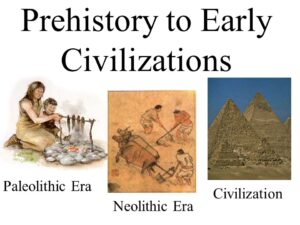
Although imperial powers settled most differences of opinion with their colonial subjects through force, increased awareness of non-Western peoples raised new questions for European scholars about the nature of society and of culture. Effective colonial administration required some degree of understanding of other cultures.
Emerging theories of sociocultural evolution allowed Europeans to organize their new knowledge in a way that reflected and justified their increasing political and economic domination of others. Such systems saw colonized people as less evolved, and colonizing people as more evolved. This mindset is what the Confederate states used to justify their socioeconomic institution of slavery and it continues today in the U.S. concept of white supremacy.
Together, the Industrial Revolution and the rise of capitalism allowed and promoted continual revolutions in the means of production. Emerging theories of sociocultural evolution reflected a belief that the changes in Europe brought by the Industrial Revolution and capitalism were improvements.
Industrialization, combined with the intense political change brought about by the French Revolution of 1789 and the U.S. Constitution, which paved the way for the dominance of democracy, forced European thinkers to reconsider some of their assumptions about how society was organized. They all agreed that the history of humanity was pursuing a certain fixed path, most likely that of social progress.
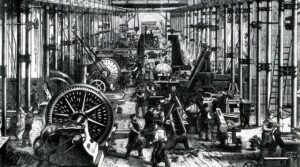
Industrial Revolution
Unilineal evolution holds that if organisms could develop over time according to discernible, deterministic laws, then it seemed reasonable that societies could as well. Human society was compared to a biological organism, and social science equivalents of concepts like variation, natural selection, and inheritance were introduced as factors resulting in the progress of societies.
The idea of progress led to the aforementioned concept of fixed “stages” through which human societies progress. The publication of Darwin’s works proved a boon to the proponents of sociocultural evolution, who saw the ideas of biological evolution as an attractive explanation for many questions about the development of society. The process of societal growth can be divided into certain stages, have beginning and eventual end, and that this growth is in fact social progress: each newer, more-evolved society is “better.”
Thus, progressivism became one of the basic ideas underlying the theory of sociocultural evolutionism. It was divided into three stages:
- Theological stage, in which nature was mythically conceived and man sought the explanation of natural phenomena from supernatural beings;
- Metaphysical stage, in which nature was conceived of as a result of obscure forces and man sought the explanation of natural phenomena from them;
- Positive stage, in which all abstract and obscure forces are discarded, and natural phenomena are explained by their constant relationship.
This progress is thought to be forced through the development of the human mind, and through increasing application of thought, reasoning and logic to the understanding of the world with the science-valuing society as the highest, most developed type of human organization.
Collective vs. Individual Evolution
One school of thought argued against government intervention as it was believed that society should evolve toward more individual freedom, differentiated between two phases of development as regards societies’ internal regulation: the “military” and “industrial” societies. The earlier (and more primitive) military society has the goal of conquest and defense, is centralized, economically self-sufficient, collectivistic, puts the good of a group over the good of an individual, uses compulsion, force and repression, and rewards loyalty, obedience and discipline.
freedom, differentiated between two phases of development as regards societies’ internal regulation: the “military” and “industrial” societies. The earlier (and more primitive) military society has the goal of conquest and defense, is centralized, economically self-sufficient, collectivistic, puts the good of a group over the good of an individual, uses compulsion, force and repression, and rewards loyalty, obedience and discipline.
 The industrial society, in contrast, has a goal of production and trade, is decentralized, interconnected with other societies via economic relations, works through voluntary cooperation and individual self-restraint, treats the good of the individual as of the highest value, regulates the social life via voluntary relations; and values initiative, independence and innovation. The transition process from the military to industrial society is the outcome of steady evolutionary processes within the society.
The industrial society, in contrast, has a goal of production and trade, is decentralized, interconnected with other societies via economic relations, works through voluntary cooperation and individual self-restraint, treats the good of the individual as of the highest value, regulates the social life via voluntary relations; and values initiative, independence and innovation. The transition process from the military to industrial society is the outcome of steady evolutionary processes within the society.
These concepts can be seen in the current polarization of American society. Although evolved from the military society model, the democratic society values the overall good of as a means of stability and happiness to foster productivity and prosperity. The individual freedom model values unrestricted freedom of choice as the preferred economic system. The concept of Libertarianism defines the later. Since both, systems are necessary to for a healthy modern economy to function the divide appears to be artificial in that it’s created as a political means to obtain civil power.
Technology & Society
As crude as they might have been, the technological advances of the three stages of sociocultural evolution were technology none the less. Like fire, bow, pottery in the savage era, domestication of animals, agriculture and metalworking in the barbarian era and alphabet and writing in the civilization era, a link was made between social progress and technological progress.
evolution were technology none the less. Like fire, bow, pottery in the savage era, domestication of animals, agriculture and metalworking in the barbarian era and alphabet and writing in the civilization era, a link was made between social progress and technological progress.
Technological progress was viewed as a force behind social progress, and held that any social change – in social institutions, organizations or ideologies – has its beginnings in technological change. It was the basis of Marxist theory in that materialistic factors – economic and technological – are decisive in shaping the fate of humanity.
Social Progression
19th-century theorists usually measured progression through one stage and the next in terms of increasing social complexity including class differentiation and a complex division of labor, or an increase in intellectual, theological, and aesthetic sophistication. These principles were used by ethnologists primarily to explain differences in religious beliefs and kinship terminologies among various societies. These sociocultural evolution concepts will be more deeply explore as I look at how family and labor has impacted, and been impacted, by the American sociocultural divide.
 Lester Frank Ward (1841–1913), sometimes referred to as the “father” of American sociology, believed that the law of evolution functioned much differently in human societies than it did in the plant and animal kingdoms, and theorized that the “law of nature” had been superseded by the “law of the mind.”
Lester Frank Ward (1841–1913), sometimes referred to as the “father” of American sociology, believed that the law of evolution functioned much differently in human societies than it did in the plant and animal kingdoms, and theorized that the “law of nature” had been superseded by the “law of the mind.”
He stressed that humans, driven by emotions, create goals for themselves and strive to realize them (most effectively with the modern scientific method) whereas there is no such intelligence and awareness guiding the non-human world. Plants and animals adapt to nature; man, shapes nature.
Ward regarded competition (survival of the fittest) as a destructive force, pointing out that all human institutions, traditions and laws were tools invented by the mind of man and that that mind designed them, like all tools, to “meet and checkmate” the unrestrained competition of natural forces. Ward felt that authoritarian governments repress the talents of the individual, but he believed that modern democratic societies, which minimized the role of religion and maximized that of science, could effectively support the individual in his or her attempt to fully utilize their talents and achieve happiness.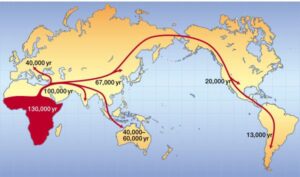
He believed that the evolutionary processes have four stages: First comes cosmogenesis, creation and evolution of the world; then, when life arises, there is biogenesis; then the development of humanity leads to anthropogenesis, which is influenced by the human mind; and last is sociogenesis, which shapes the evolutionary process itself to optimize progress, human happiness and individual self-actualization.
While Ward regarded modern societies as superior to “primitive” societies (one need only look to the impact of medical science on health and lifespan) he rejected theories of white supremacy; he supported the Out-of-Africa theory of human evolution and believed that all races and social classes were equal in talent and knowledge potential.
 However, Ward did not think that evolutionary progress was inevitable and he feared the degeneration of societies and cultures, which he saw as very evident in the historical record and, based on the negative radicalization of the past four years, could be happening in the U.S. right now.
However, Ward did not think that evolutionary progress was inevitable and he feared the degeneration of societies and cultures, which he saw as very evident in the historical record and, based on the negative radicalization of the past four years, could be happening in the U.S. right now.
Many anthropologists and sociologist have added to the sociocultural evolution theory canon including Ferdinand Tonnies’s theory of cultural integration which was the 19th century’s version of globalization and Max Weber’s sociocultural evolution stages from a charismatic domination (Atilla the Hun); to traditional domination (patriarchs, patrimonialism, feudalism; to a legal (rational) domination (modern law and state, bureaucracy).
Critical Examination
The early 20th-century inaugurated a period of systematic critical examination, and rejection of the generalizations of the unilineal theories of sociocultural evolution. Cultural anthropologists such as Franz Boas (1858–1942), along with his students, including Ruth Benedict and Margaret Mead, are regarded as the leaders of anthropology’s rejection of classical social evolutionism. They used ethnography and more rigorous empirical methods and theories regarding “stages” of evolution were especially criticized as illusions.
Additionally, they rejected the distinction between “primitive” and “civilized” (or “modern”), pointing out that so-called primitive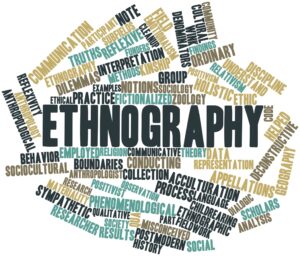 contemporary societies have just as much history, and were just as evolved, as so-called civilized societies. They therefore argued that any attempt to use this theory to reconstruct the histories of non-literate (no historical documents) peoples is entirely speculative and unscientific.
contemporary societies have just as much history, and were just as evolved, as so-called civilized societies. They therefore argued that any attempt to use this theory to reconstruct the histories of non-literate (no historical documents) peoples is entirely speculative and unscientific.
They observed that the postulated progression, which typically ended with a stage of civilization identical to that of modern Europe, is ethnocentric. They also pointed out that the theory assumes that societies are clearly bounded and distinct, when in fact cultural traits and forms often cross social boundaries and diffuse among many different societies and are thus an important mechanism of change.
Later critics observed that the assumption of firmly bounded societies was proposed precisely at the time when European powers were colonizing non-Western societies, and was thus self-serving. Many anthropologists and social theorists now consider unilineal cultural and social evolution a Western myth seldom based on solid empirical grounds. Critical theorists argue that notions of social evolution are simply justifications for power by the élites of society.
Finally, the devastating World Wars that occurred between 1914 and 1945 crippled Europe’s self-confidence. After millions of deaths, genocide, and the destruction of Europe’s industrial infrastructure, the idea of “progress” seemed dubious at best.
Thus, modern sociocultural evolutionism rejects most of classical social evolutionism due to various theoretical problems:
- The theory was deeply ethnocentric – it makes heavy value judgments about different societies, with Western civilization seen as the most valuable.
- It assumed all cultures follow the same path or progression and have the same goals.
- It equated civilization with material culture (technology, cities, etc.)
Because social evolution was posited as a scientific theory, it was often used to support unjust and often racist social practices – particularly colonialism, slavery, and the unequal economic conditions present within industrialized Europe. Social Darwinism is especially criticized, as it purportedly led to some philosophies used by the Nazis.
Max Weber’s major works in economic sociology and the sociology of religion dealt with the rationalization, secularization, and so called “disenchantment” which he associated with the rise of capitalism and modernity. In sociology, rationalization is the process whereby an increasing number of social actions become based on considerations of calculation rather than on motivations derived from morality, emotion, custom, or tradition.
 Rather than referring to what is genuinely “rational” or “logical,” rationalization refers to a relentless quest for goals that might actually function to the detriment of a society. Rationalization is an ambivalent aspect of modernity, manifested especially in Western society – as a behavior of the capitalist market, of rational administration in the state and bureaucracy, of the extension of modern science, and of the expansion of modern technology.
Rather than referring to what is genuinely “rational” or “logical,” rationalization refers to a relentless quest for goals that might actually function to the detriment of a society. Rationalization is an ambivalent aspect of modernity, manifested especially in Western society – as a behavior of the capitalist market, of rational administration in the state and bureaucracy, of the extension of modern science, and of the expansion of modern technology.
Critical theorists, as anti-positivists, are critical of the idea of a hierarchy of sciences or societies, particularly with respect to the sociological positivism. The concept of pure instrumental rationality has been critiqued to the meaning that scientific-thinking becomes something akin to ideology itself. Rationalization as a manifestation of modernity may be most closely and regrettably associated with the events of the Holocaust.
Modern theories
When the critique of classical social evolutionism became widely accepted, modern anthropological and sociological approaches changed respectively. Modern theories are careful to avoid unsourced, ethnocentric speculation, comparisons, or value judgments; more or less regarding individual societies as existing within their own historical contexts. These conditions provided the context for new theories such as cultural relativism and multilineal evolution.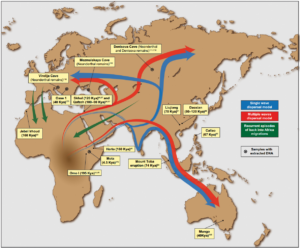
In the 1920s and 1930s, Gordon Childe revolutionized the study of cultural evolutionism. He conducted a comprehensive pre-history account that provided scholars with evidence for African and Asian cultural transmission into Europe.
He combated scientific racism by finding the tools and artifacts of the indigenous people from Africa and Asia and showed how they influenced the technology of European culture. Evidence from his excavations countered the idea of Aryan supremacy and superiority.
Childe explained cultural evolution by his theory of divergence with modifications of convergence. He postulated that different cultures form separate methods that meet different needs, but when two cultures were in contact, they developed similar adaptations, solving similar problems.
Rejecting the theory of parallel cultural evolution, Childe found that interactions between cultures contributed to the convergence of similar aspects most often attributed to one culture and he placed emphasis on human culture as a social construct rather than products of environmental or technological contexts.
Neo-evolutionism
Neoevolutionism was the first in a series of modern multilineal evolution theories. It emerged in the 1930s and extensively developed in the period following the Second World War and was incorporated into both anthropology and sociology in the 1960s. It bases its theories on empirical evidence from areas of archaeology, paleontology, and historiography and tries to eliminate any references to systems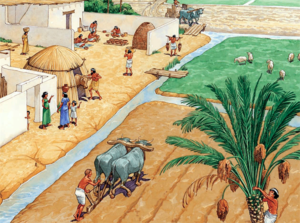 of values, be it moral or cultural, instead trying to remain objective and simply descriptive. It was the neo-evolutionary thinkers who brought back evolutionary thought and developed it to be acceptable to contemporary anthropology.
of values, be it moral or cultural, instead trying to remain objective and simply descriptive. It was the neo-evolutionary thinkers who brought back evolutionary thought and developed it to be acceptable to contemporary anthropology.
Neo-evolutionism discards many ideas of classical social evolutionism, namely that of social progress, so dominant in previous sociology evolution-related theories. It discards the determinism argument and introduces probability, arguing that accidents and free will greatly affect the process of social evolution.
It also supports counterfactual history – asking “what if” and considering different possible paths that social evolution may take or might have taken, and thus allows for the fact that various cultures may develop in different ways, some skipping entire stages others have passed through. Neo-evolutionism stresses the importance of empirical evidence and measurable information for analyzing the process of sociocultural evolution rather than the 19th-centyury evolutionism that used value judgments and assumptions for interpreting data.
Technology and Sociocultural Evolution
Technology is Leslie White’s most important factor of his sociocultural evolution theory. He differentiates between five stages of human development:
- In the first, people use the energy of their own muscles
- In the second, they use the energy of domesticated animals
- In the third, they use the energy of plants (agricultural revolution)
- In the fourth, they learn to use the energy of natural resources: coal, oil, gas
- In the fifth, they harness nuclear energy
Julian Steward rejected the 19th-century notion of progress, and instead called attention to the Darwinian notion of “adaptation”, arguing, as stated above, that all societies had to adapt to their environment in some way. He argued that different adaptations could be studied through the examination of the specific resources a society exploited, the technology the society relied on to exploit these resources, and the organization of human labor.
He further argued that different environments and technologies would require different kinds of adaptations, and that as the resource base or technology changed, so too would a culture. In other words, cultures do not change according to some inner logic, but rather in terms of a changing relationship with a changing environment.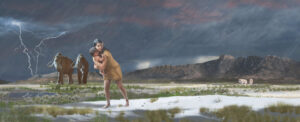
Cultures therefore would not pass through the same stages in the same order as they changed; rather, they would change in varying ways and directions. He questioned the possibility of creating a social theory encompassing the entire evolution of humanity; however, he argued that anthropologists are not limited to describing specific existing cultures.
He believed that it is possible to create theories analyzing typical common culture, representative of specific eras or regions. As the decisive factors determining the development of given culture he pointed to technology and economics, but noted that there are secondary factors, like political system, ideologies and religion. All those factors push the evolution of a given society in several directions at the same time.
Marshall Sahlins divided the evolution of societies into ‘general‘ and ‘specific.” General evolution is the tendency of cultural and social systems to increase in complexity, organization and adaptiveness to environment. However, as the various cultures are not isolated, there is interaction and a diffusion of their qualities (like technological inventions). This leads cultures to develop in different ways (specific evolution), as various elements are introduced to them in different combinations and at different stages of evolution.
Gerhard Lenski called his work the ecological-evolutionary theory. He views technological progress as the most basic factor in the evolution of societies and cultures. Lenski focuses on information – its amount and uses. The more information and knowledge a given society has from the shaping of its natural environment, the more advanced it is.
He distinguishes four stages of human development, based on advances in the history of communication:
- In the first stage, information is passed by genes.
- In the second, as humans gain awareness of their feelings & sensations, they learn and pass information through their experiences.
- In the third, humans start using signs and develop logic.
- In the fourth, they create symbols and develop language and writing.
Advancements in the technology of communication translate into advancements in the economic system and political system, distribution of goods, social inequality and other spheres of social life.
Sociobiology
Sociobiology departs perhaps the furthest from classical social evolutionism. It was introduced by Edward Wilson and followed his adaptation of evolutionary theory to the field of social sciences. Wilson pioneered the attempt to explain the evolutionary mechanics behind social behaviors such as altruism (selfless concern for the wellbeing of others), aggression, and nurturance. In doing so, Wilson sparked one of the greatest scientific controversies of the 20th century.
The current theory of evolution, the modern evolutionary synthesis (or Neo-Darwinism), explains that evolution of species occurs through a combination of natural selection and genetics. Essentially, this modern synthesis introduced the connection between the two important discoveries of gene evolution and selection as the main mechanism of evolution. Within the study of human societies, sociobiology is closely related to the fields of human behavioral ecology and evolutionary psychology.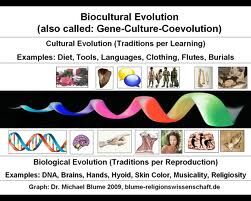
Sociobiology has remained highly controversial as it contends genes explain specific human behaviors, although sociobiologists describe this role as a very complex and often unpredictable interaction between nature and nurture. Some biologists have taken a critical view that genes play a direct role in human behavior.
Since the rise of evolutionary psychology, another school of thought, Dual Inheritance Theory, has emerged in the past 25 years that applies the mathematical standards of Population genetics to modeling the adaptive and selective principles of culture.
Robert Boyd at UCLA and Peter Richerson at UC Davis view, cultural evolution, operating on socially learned information, exists on a separate but co-evolutionary track from genetic evolution, and while the two are related, cultural evolution is more dynamic, rapid, and influential on human society than genetic evolution.
Dual Inheritance Theory has the benefit of providing unifying territory for a “nature and nurture” paradigm and accounts for more accurate phenomenon in evolutionary theory applied to culture, such as randomness effects (drift), concentration dependency, “fidelity” of evolving information systems, and lateral transmission through communication.
Theory of Modernization
Theories of modernization have been developed and popularized in 1950s and 1960s and are closely related to the dependency theory and development theory.
They combine the previous theories of sociocultural evolution with practical experiences and empirical research, especially those from the era of decolonization.
The theory states that:
- Western countries are the most developed, and the rest of the world (mostly former colonies) is in the earlier stages of development, and will eventually reach the same level as the Western world.
- Development stages go from the traditional societies to developed ones.
- Third World countries have fallen behind with their social progress and need to be directed on their way to becoming more advanced.
Developing from classical social evolutionism theories, the theory of modernization stresses the modernization factor: many societies are simply trying (or need) to emulate the most successful societies and cultures. It also states that it is possible to do so, thus supporting the concepts of social engineering and that the developed countries can and should help those less developed, directly or indirectly. The theory of modernization has been subject to some criticism similar to that levied against classical social evolutionism, especially for being too ethnocentric, one-sided and focused on the Western world and its culture.
Punctuated Equilibrium
The status of a human society rests on the productivity of food production. Food productivity changes very little for stable societies, but increases during transitions. When productivity and especially food productivity can no longer be increased, man will have achieved a stable automated society. Punctuated Equilibrium Theory states that in order for human societies to have a stable cultural and social future they first must have a stable society, and second, then a transition into a society with greater complexity.
This model would claim:
- Mankind has had a stable animal society,
- Then a transition to a stable tribal society,
- Then another transition to a stable peasant society and
- Currently is in a transitional industrial society.
Political perspectives
The Cold War period was marked by rivalry between two superpowers, both of which considered themselves to be the most highly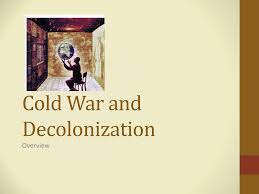 evolved cultures on the planet. The USSR painted itself as a socialist society which emerged from class struggle, destined to reach the state of communism, while sociologists in the United States (such as Talcott Parsons) argued that the freedom and prosperity of the United States were a proof of a higher level of sociocultural evolution of its culture and society.
evolved cultures on the planet. The USSR painted itself as a socialist society which emerged from class struggle, destined to reach the state of communism, while sociologists in the United States (such as Talcott Parsons) argued that the freedom and prosperity of the United States were a proof of a higher level of sociocultural evolution of its culture and society.
At the same time, decolonization created newly independent countries who sought to become more developed – a model of progress and industrialization which was itself a form of sociocultural evolution. There is, however, a tradition in European social theory arguing that this progression coincides with a loss of human freedom and dignity.
At the height of the Cold War, this tradition merged with an interest in ecology to influence an activist culture in the 1960s. This movement produced a variety of political and philosophical programs which emphasized the importance of bringing society and the environment into harmony.
Technological perspectives
Schematic timeline of information and replicators in the biosphere: Major evolutionary transitions in information processing
Many argue that the next stage of sociocultural evolution consists of a merger with technology, especially information processing technology. Several cumulative major transitions of evolution have transformed life through key innovations in information storage and replication, including RNA, DNA, multicellularity, and also language and culture as inter-human information processing systems.
In this sense it can be argued that the carbon-based biosphere has generated a cognitive system (humans) capable of creating technology that will result in a comparable evolutionary transition.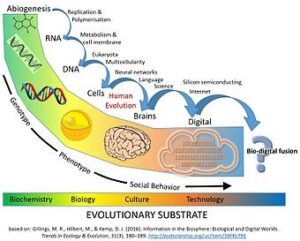
Digital information has reached a similar magnitude to information in the biosphere. It increases exponentially, which exhibits high-fidelity replication, evolves through differential fitness, is expressed through artificial intelligence (AI), and has facility for virtually limitless recombination.
Like previous evolutionary transitions, the potential symbiosis between biological and digital information will reach a critical point where these codes could compete via natural selection. Alternatively, this fusion could create a higher-level superorganism employing a low-conflict division of labor in performing informational tasks…humans have already embraced fusions of biology and technology.
We spend most of our waking time communicating through digitally mediated channels, most transactions on the stock market are executed by automated trading algorithms, and our electric grids are in the hands of artificial intelligence. With one in three marriages in America beginning online, digital algorithms are also taking a role in human pair bonding and reproduction.
Anthropological Perspectives
Current political theories of the new tribalists consciously mimic ecology and the life-ways of indigenous peoples, augmenting them with modern sciences.
Ecoregional Democracy attempts to confine the “shifting groups,” or tribes, within “more or less clear boundaries” that a society inherits from the surrounding ecology, to the borders of a naturally occurring ecoregion.
Progress can proceed by competition between but not within tribes, and it is limited by ecological borders or by Natural Capitalism incentives which attempt to mimic the pressure of natural selection on a human society by forcing it to adapt consciously to scarce energy or material resources. 
Gaianism, an earth-centered philosophical, holistic, and spiritual belief that shares expressions with earth religions and paganism while not identifying exclusively with any specific one, argues that societies evolve deterministically to play a role in the ecology of their biosphere, or else die off as failures due to competition from more efficient societies exploiting nature’s leverage.
Thus, some have appealed to theories of sociocultural evolution to assert that optimizing the ecology and the social harmony of closely knit groups is more desirable or necessary than the progression to “civilization.”
A 2002 poll of experts on Neo-arctic and Neo-tropic indigenous peoples (reported in Harper’s magazine) revealed that all of them would have preferred to be a typical New World person in the year 1491, prior to any European contact, rather than a typical European of that time.
This approach has been criticized by pointing out that there are a number of historical examples of indigenous peoples doing severe environmental damage (such as the deforestation of Easter Island and the extinction of mammoths in North America) and that proponents of the goal have been trapped by the European stereotype of the noble savage.
Conclusion
Today most anthropologists reject 19th-century notions of progress and the three assumptions “stages” of unilineal evolution. They focus on the relationship between a culture and its environment to explain different aspects of a culture. That said, most modern cultural anthropologists have adopted a general systems approach, examining cultures as emergent systems and arguing that one must consider the whole social environment, which includes political and economic relations in a specific culture and among other cultures.
References:
Sociocultural Evolution: From Wikipedia, the free encyclopedia – https://en.wikipedia.org/wiki/Sociocultural_evolution
Sociocultural Evolution and Cognitive Ontogenesis: A Sociocultural-Cognitive Algorithm (2003) https://doi.org/10.1023/B:CMOT.0000026584.19223.ef
Read More
Posted by Michael Haran on Feb 17, 2021
Let’s start things off with a riddle:
The beginning of evolution
Is the end of time and space
The beginning of every end
Is the end to every place
Can you guess the riddle?
Hi, everyone. This is my first weekly post which takes a look the evolution of our species past, present and future. My next post will cover the history of social/cultural evolution and how it has exacerbated the political divide in this country and how we can attempt a fix.
Future posts will explore various topics that are relevant to human advancement as well as our survival on this planet. Topics will be seen through the lens of physical/mental and cultural evolution. The physical/mental, which is explored in this post, considers human evolution through the genetic component and how evolution is being impacted by the human constructs of curiosity, imagination and creativity. Cultural evolution will be examined as it now exists through the evolution of civilization and how it has impacted human relationships and interactions between family and society.
The past four years are a prime example of how civil interruptions can be detrimental to human culture and society’s progress. But on the flip side, one has to question, what is considered progressive evolution and is it always for good or can progress also be evil?
As D.T. Max asked in his April of 2017 National Geographic article “Beyond Human:”
“Are we on the way to redefining how we evolve? Does evolution now mean not just the slow grind of natural selection spreading desirable genes, but also everything that we can do to amplify our powers and the powers of the things we make – a union of genes, culture, and technology?
And if so, where is it taking us?
First the Past
Evolution on planet Earth has never stopped – it is relentless. When the chances of any living thing’s survival can be increased, nature will find ways to mutate to make it happen.
Primates diverged from other mammals about 85 million years ago. A major climate shift happened between 3.0 and 2.5 million years ago marking the onset of Northern Hemisphere glacial period. This period generally coincides with the timing of the origin of the genus Homo which leads us to, Homo Sapien.
The oldest known skeleton of a modern human dates to about 200,000 years ago. Modern humans evolved beginning with primates which lead to the emergence of Homo Sapiens as a distinct species. This process involved the gradual development of traits such as upright walking and language. Modern human language is thought to have begun about 100 thousand years ago and we haven’t shut up since. Humans are thought to have migrated out of Africa about 60 thousand years ago, about 20 thousand years before the Neanderthal species died out. The question of whether the Neanderthal was killed-off or interbred with Homo Sapiens is still a matter of debate. Because modern humans have a small amount of Neanderthal DNA it supports the interbreeding theory. Plus, our Neanderthal relatives can be seen on any given Sunday playing football as NFL lineman.
It was thought that human evolution took millions of years but over the past 3,000 years, many populations have evolved genetic adaptations to their local environments. As humans migrated north their skin lighten to allow the absorption of Vitamin D in the shorter daylight environment. People in Siberia and the high arctic have developed metabolisms that are uniquely adapted to survive extreme cold; the Bajau people of the South Pacific can dive 70 meters and stay underwater for almost 15 minutes because of unusually large, oxygen holding spleens like deep diving seals; people that live in the Hymnals have evolve to flourish in a lower oxygen environment. Three thousand years sounds like a long time but it’s the fastest known adaptation ever to have evolved in humans.
Now the Future
Biological evolution may be unstoppable and more skillful than the genetic evolution humans can initiate with crossbreeding in plants and animals, but how important is it, measured against the adaptations we can devise with our amazing brains? As the futurist Ray Kurzweil said, “We will transcend all of the limitations of our biology. That is what it means to be human – to extend who we are.”
It’s clear that human evolution isn’t over. Surviving to reproductive age is what drives natural selection, the force behind evolutionary change. The big question is, will our technological and scientific innovations impact our evolution?
Modern medicine has allowed longer survival which becomes encoded as part of evolution. Good sanitation, antibiotics and vaccines all make differences between genes less important and modern medical procedures that prevent death all tend to stop natural selection through genes, allowing survival to a reproductive age. Modern medicine also allows genetic drift which makes genetic differences vary randomly within a population because harmful mutations don’t kill people and thus are not eliminated. These modifications are not to genes themselves but to when and how those genes are expressed, the science of which is called Epigenetics. These changes can happen in as short a time frame as one lifetime and be passed on to offspring. For example, human drug addiction has been shown to be pasted to offspring through the sperm and egg in a single generation.
Technology now does much of the same work and does it far faster, bolstering our physical skills, deepening our intellectual range, and allowing us to expand into new and more challenging environments.
A prime example is the new technology called CRISPR-Cas9 which is a procedure to snip out a section of DNA sequence from a gene and put a different one in, quickly and accurately. What used to take researchers years now takes a fraction of the time. No technology has remotely existed before that is as powerful for the manipulation of the human genome. Designing synthetic cells beyond the bounds of evolution (so called “Designer Cells”) is encompassing everything from reengineering pig embryos to make their organs safer for human transplant to trying to fix the genetic defect in human embryos. The moral implications of playing God or creating a Hitler type super-race have to be weighed against the ability to correct natures mistakes by producing disease-free embryos. At this time there is an international moratorium on all therapies for making heritable changes in human genes until they are proved safe and effective. CRISPR is no exception.
Most scientist don’t think the ban will last. Some pointed to the history of in-vitro fertilization (IVF) as a precedent. It was first touted as a medical procedure for otherwise infertile couples. Soon its potential to eradicate devastating genetic diseases was clear. Evolution is not benign and much human suffering has come from nature’s mistakes. As IVF became more familiar, its accepted purpose spread from preventing disease to include the designer cells of sex selection and even choosing desired hair and eye color.
CRISPR is a vastly more powerful technology than IVF, with a far greater risk of abuse. But the moral issues aside, the potential benefits of applying CRISPR to humans are undeniable and many feel that as soon as CRISPR is shown to be safe, ethical questions will recede, just as they did with IVF. There are already 2,300 CRISPR gene therapy trials under way, including for anti-aging and Alzheimer’s disease.
As George Church, a molecular engineer at Harvard and MIT stated, “DNA was left in the dust by cultural evolution. But now it’s catching up.”
Riddle Answer:
The letter E
Read More
Posted by Michael Haran on Feb 12, 2018
By Michael Haran
The following link shows the counties that Trump won in an inter-active format. http://time.com/4587866/donald-trump-election-map/?xid=emailshare The site states, “At present count, Trump snagged 220 counties that voted for President Obama in 2012, while Clinton poached 17 that went for Mitt Romney.” Most of these counties are in the rust-belt swing states. California has 14 Republican Congressional House seats. If seven can be flipped to Democrats that would represent nearly a third of the 24 seats Democrats need to take control of the House. Nationwide, the Democratic Congressional Campaign Committee has identified 59 Republican-held districts they believe can be won by a Democrat.
As important as taking back the U.S. Congress is it is just as important for the Democrats to fare well in the 36 gubernatorial contests and thousands of state legislative races next year, where Republicans currently hold a 3,034 to 2,317 advantage. The past 10 years have eroded the Democratic base, as fewer ideas are percolating up from the states. Republican gerrymandering has cost at least a dozen House seats and hundreds in state legislatures. State governments also often serve as training grounds to develop candidates for higher office and provide national awareness.
In 1979 the Republicans were in the same boat the Democrats find themselves today. The Democrats controlled all three branches of government and the gloom of the post-Watergate era hung over them like a rural graveyard fog. Then along came Ronald Reagan with his upbeat message. He projected a can-do optimism that was welcomed after a series of economic, military and political shocks, tailoring his conservative message to appeal to the gas station attendant, as well as the wealthy country club set. In 1980, Republicans won a majority in the Senate for the first time in more than 25 years and made major gains in statehouses as well.
Most political party comebacks are marked not by some innovative policy agenda, but by connective messages and powerful personalities like Bill Clinton, Barack Obama and Trump. It’s not about ideology or 17-point policy prescriptions. “In 2016, the problem was not about an agenda; we had that,” said Paul Begala, a leading Democratic strategist and close associate of Bill and Hillary Clinton. “The problem was message.”
Last month, Democratic congressional leaders put out a “Better Deal” agenda, a familiar litany of proposals like a higher minimum wage, lower drug prices, more job training and less corporate welfare. As stated by Albert R. Hunt in his article “Democrats need a fresh message to win in 2018,” for the Bloomberg View, “Although it does have its uses, bold or innovative it’s not. It’s a good organizing tool for candidates to be more than just anti-Trump,” said Stephanie Cutter, a former deputy campaign manager for Obama and a strategist in the successful 2006 Democratic campaign to win back a majority in the House. A much better slogan would be “LET’S DO IT!” This slogan works on many levels plus it sounds fun and exciting.
What I think would be a great idea, would be to put a number of cargo vans (like the Ford 250 Transit which you can stand up in) on the road in every Republican-held congressional district that has a chance of flipping to the Democrats in 2018. These vans, which will have LET’S DO IT! painted on the sides, should carry a team with the Democratic candidate into these counties and towns and hold a town-hall style BBQ and talk to people about how they feel about jobs, healthcare and education.
This program would target the areas where disenfranchised voters switched to Republican to tell them the truth about Trump (although most know it by now) and, by the time this project is rolled out (in time for the mid-term 2018 elections), Trump the fraud and con artist should have been well-cemented in people’s minds. The message would focus on retraining people to work in the service sector or tech sector since many of the jobs lost are not coming back because they were either replaced by more efficient green energy alternatives or were automated. The United States has the most advanced service economy in the world and there is no reason why people should not take advantage of it. From the commentary patterns that emerge, scripts would be written with enough flexibility to adjust to a particular community’s sentiments. This data could help determine the message on the local, regional, and even national levels.
The message should also be authentic and crafted in a way that avoids issues like abortion, uniformity on transgender soldiers, higher corporate tax rates, lower defense spending and impeaching Trump – all political poison policy proposals that won’t play well in closely-fought battlegrounds that Democrats need to win. The mistakes that Clinton made in saying to the coal country that, “your jobs are not coming back” or to the wealthy Democratic donors, “your taxes will be going up” have to be avoided. These issues may be true but you don’t state the obvious. The same has to be done when referencing Trump. Never state the obvious. Motivating and getting people to engage is a three-step process:
- First, the issue presented requires an emotional response;
- the second phase is reflecting or thinking about the particular phenomenon;
- and the third phase is action
If successful, an authentic message will be sufficiently motivational to get people to engage to help reverse the true ugliness that has been unleashed by this administration.
This program can work on the state and local level too. Although the message would have to include local and regional issues (as Tip O’Neill said, “All politics is local.”), there will be plenty of Democratic contenders to help field-test the party’s message. The experiment will be successful if it yields messengers who best counter the failings of Trump. Starting at the lowest level of elected officials, like local school boards, candidates must know about governing without appearing to be elitist, who can be dignified as well as approachable, are persuasive in articulating Democratic themes like the dangers of income inequality and wage stagnation, and just might be able to create some local enthusiasm.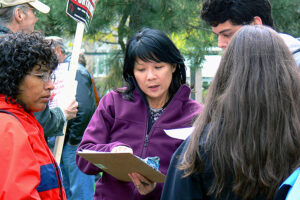
Over the past ten years I’ve watched California State Senator Mike McGuire (D-Healdsburg) come of age. At 19 years old, he was the youngest person ever elected to the town school board. He studies the issues and listens to constituents. He suffers fools graciously and will listen to anyone until one of his aides drags him away. I think Mike has learned many of his campaign sensibilities from successful senior elected officials. If structured correctly, I think this program might have the potential to help hone the skills of the next generation of Democratic leaders.
If there is one lesson learned from the Trump phenomena, it is that people want to be heard; they do not want to be neglected; they do not want to be patronized. If you want their vote, people have to truly feel that they are cared about – even loved. If necessary, this literally has to be accomplished one person at a time. The best elected officials know this instinctively. At a recent Democratic dinner meeting Congressman Jared Huffman (D – San Rafael) was excited at the potential up and coming crop of new Democratic candidates.
I think this is a solid way of getting boots-on-the-ground in contested national, state and local districts to reintroduce the Democratic Party as the working man’s party, an image that got away from us in the 2016 election. So, fire up those burgers and LET’S DO IT!
Read More









 freedom, differentiated between two phases of development as regards societies’ internal regulation: the “military” and “industrial” societies. The earlier (and more primitive) military society has the goal of conquest and defense, is centralized, economically self-sufficient, collectivistic, puts the good of a group over the good of an individual, uses compulsion, force and repression, and rewards loyalty, obedience and discipline.
freedom, differentiated between two phases of development as regards societies’ internal regulation: the “military” and “industrial” societies. The earlier (and more primitive) military society has the goal of conquest and defense, is centralized, economically self-sufficient, collectivistic, puts the good of a group over the good of an individual, uses compulsion, force and repression, and rewards loyalty, obedience and discipline. The industrial society, in contrast, has a goal of production and trade, is decentralized, interconnected with other societies via economic relations, works through voluntary cooperation and individual self-restraint, treats the good of the individual as of the highest value, regulates the social life via voluntary relations; and values initiative, independence and innovation. The transition process from the military to industrial society is the outcome of steady evolutionary processes within the society.
The industrial society, in contrast, has a goal of production and trade, is decentralized, interconnected with other societies via economic relations, works through voluntary cooperation and individual self-restraint, treats the good of the individual as of the highest value, regulates the social life via voluntary relations; and values initiative, independence and innovation. The transition process from the military to industrial society is the outcome of steady evolutionary processes within the society. evolution were technology none the less. Like fire, bow, pottery in the savage era, domestication of animals, agriculture and metalworking in the barbarian era and alphabet and writing in the civilization era, a link was made between social progress and technological progress.
evolution were technology none the less. Like fire, bow, pottery in the savage era, domestication of animals, agriculture and metalworking in the barbarian era and alphabet and writing in the civilization era, a link was made between social progress and technological progress. Lester Frank Ward (1841–1913), sometimes referred to as the “father” of American sociology, believed that the law of evolution functioned much differently in human societies than it did in the plant and animal kingdoms, and theorized that the “law of nature” had been superseded by the “law of the mind.”
Lester Frank Ward (1841–1913), sometimes referred to as the “father” of American sociology, believed that the law of evolution functioned much differently in human societies than it did in the plant and animal kingdoms, and theorized that the “law of nature” had been superseded by the “law of the mind.”
 However, Ward did not think that evolutionary progress was inevitable and he feared the degeneration of societies and cultures, which he saw as very evident in the historical record and, based on the negative radicalization of the past four years, could be happening in the U.S. right now.
However, Ward did not think that evolutionary progress was inevitable and he feared the degeneration of societies and cultures, which he saw as very evident in the historical record and, based on the negative radicalization of the past four years, could be happening in the U.S. right now. contemporary societies have just as much history, and were just as evolved, as so-called civilized societies. They therefore argued that any attempt to use this theory to reconstruct the histories of non-literate (no historical documents) peoples is entirely speculative and unscientific.
contemporary societies have just as much history, and were just as evolved, as so-called civilized societies. They therefore argued that any attempt to use this theory to reconstruct the histories of non-literate (no historical documents) peoples is entirely speculative and unscientific.
 Rather than referring to what is genuinely “rational” or “logical,” rationalization refers to a relentless quest for goals that might actually function to the detriment of a society. Rationalization is an ambivalent aspect of modernity, manifested especially in Western society – as a behavior of the capitalist market, of rational administration in the state and bureaucracy, of the extension of modern science, and of the expansion of modern technology.
Rather than referring to what is genuinely “rational” or “logical,” rationalization refers to a relentless quest for goals that might actually function to the detriment of a society. Rationalization is an ambivalent aspect of modernity, manifested especially in Western society – as a behavior of the capitalist market, of rational administration in the state and bureaucracy, of the extension of modern science, and of the expansion of modern technology.
 of values, be it moral or cultural, instead trying to remain objective and simply descriptive. It was the neo-evolutionary thinkers who brought back evolutionary thought and developed it to be acceptable to contemporary anthropology.
of values, be it moral or cultural, instead trying to remain objective and simply descriptive. It was the neo-evolutionary thinkers who brought back evolutionary thought and developed it to be acceptable to contemporary anthropology.


 evolved cultures on the planet. The USSR painted itself as a socialist society which emerged from class struggle, destined to reach the state of communism, while sociologists in the United States (such as Talcott Parsons) argued that the freedom and prosperity of the United States were a proof of a higher level of sociocultural evolution of its culture and society.
evolved cultures on the planet. The USSR painted itself as a socialist society which emerged from class struggle, destined to reach the state of communism, while sociologists in the United States (such as Talcott Parsons) argued that the freedom and prosperity of the United States were a proof of a higher level of sociocultural evolution of its culture and society.

